Published at 18:30, August 26, 2020
In the past few years, she has been to Ningbo many times, but she has never tasted her existence. Even my father, who is going to travel all over China, has never fully appreciated Ningbo.
This summer, we meet to go back to Ningbo again to have a good taste of Ningbo.
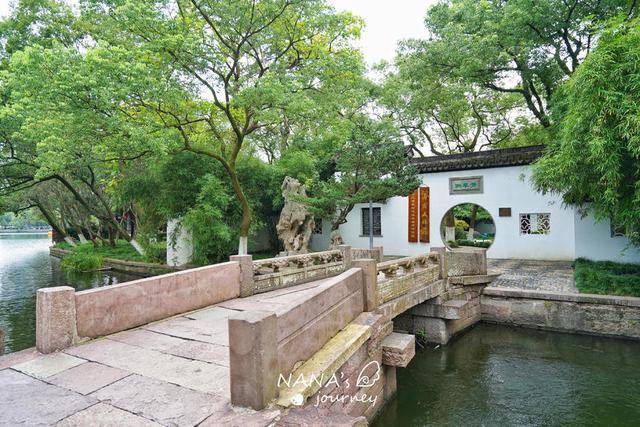
Ningbo, a famous city with a long history in Zhejiang Province, has beautiful scenery and diverse cultures,
Once an important geographical location, it is the origin of marine culture and the model of Jiangnan flavor.
In Ningbo, you can find innumerable kinds of authentic flavor, either long, or elegant, or fresh, or devout,
This time in Ningbo, we'll take a self driving tour~
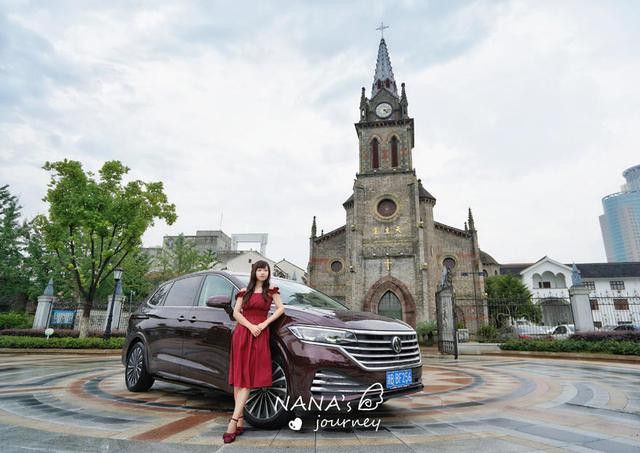
The Museum of ultra modern design style carries thousands of years of civilization of Ningbo from the inside to the outside.
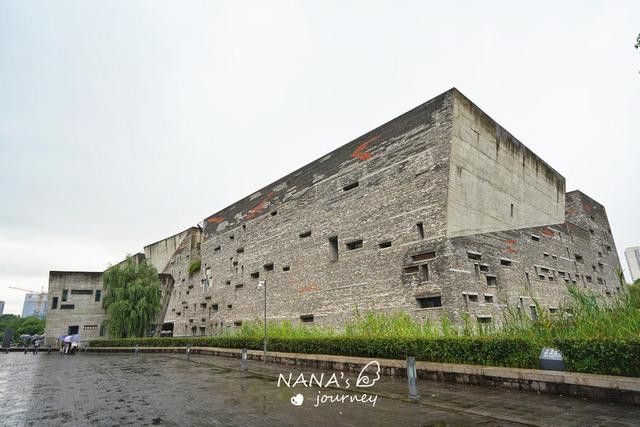
The wind is light and the clouds are light. There is no shortage of Xikou, Chengmen, old streets and former residences.
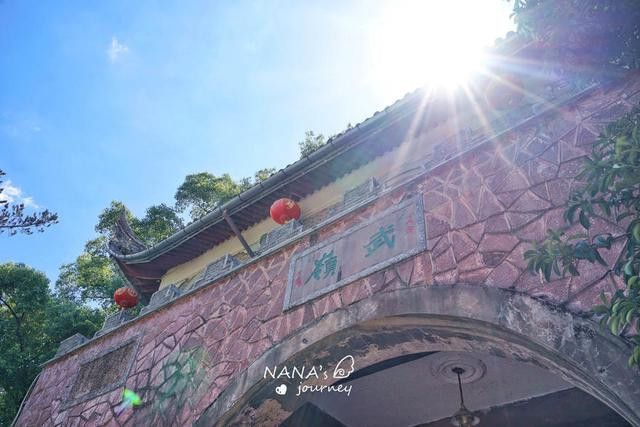
Shanghai style culture, new flavor and old Bund, the memory of history standing in Sanjiangkou forever.
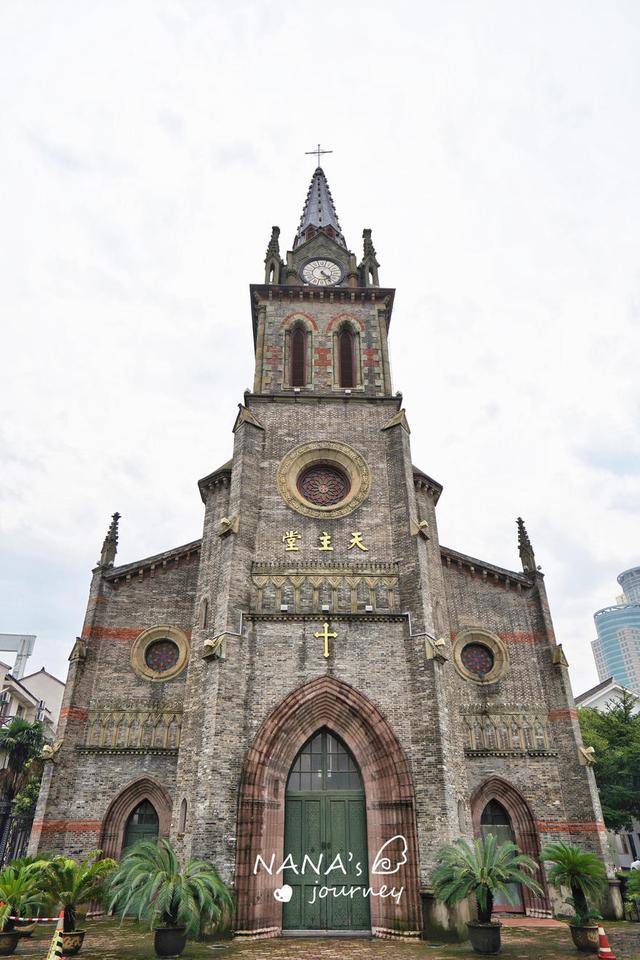
Breeze, willow Yiyi, with a devout heart, in the East money Lake walk.
Built along the river and across the street, you can find Ningbo in Nantang old street.
Flying down 3000 feet, maybe it is the spirit of qianzhangyan waterfall in Xuedou mountain.
The clear moon lake gathers the elegant demeanor of Ningbo ancient buildings and tells stories one by one.
Day1: car collection in Ningbo - Ningbo Museum - old Bund Day2: Dongqian Lake - xiaoputuo
Day3: Xuedou mountain in Xikou, Fenghua
Day4: Nantang old street Yuehu Park Drum Tower, Ningbo return car
Coexistence of modernity and history -- Ningbo Museum
To understand a city, the best way is to start with museums. I don't know when, I also began to linger in the museums of each city to understand the details of a city. Therefore, the first stop of Ningbo is Ningbo Museum. Don't underestimate the Museum of this city. This museum is now a very popular place for online card punching in Ningbo.
Ningbo Museum itself is a modern art work. Wang Shu, a famous architect, created this irregular shape museum full of post-modern art by using the Qin bricks and Han tiles, Tang, song, Ming and Qing tiles collected from the reconstruction of the old city as the external wall decoration. The Ningbo museum is now a free exhibition hall. It is allowed to make an appointment in official account in advance. The entrance is set in the middle of two irregular buildings, passing through the pool and entering the stadium.
The pavilion has three floors, but the most classic part starts from the second floor of the pavilion. The two exhibition halls on the first floor are basically special exhibitions. Link three is irregular trapezoidal stairs, momentum is full, but also the children's favorite part of play.
In fact, the overall area of the museum is not very large, but the setting of such a staircase is full of space.
In order to better understand the whole history of Ningbo, we start from the exhibition hall on the second floor and the earliest Hemudu culture in Ningbo. Hemudu culture is a Neolithic culture in the south of the lower reaches of the Yangtze River in China. It can be traced back to 7000 years ago and has a long history. Nowadays, many sites and products of that time have been found in Ningbo, which are displayed in museums.
The scene of people's life at that time was very vivid, as if it was just like what happened in front of us.
The exquisite pottery, the lifelike people and animals on it, and the surrounding buildings all reflect the rich and colorful life of the people at that time. It was produced in the Three Kingdoms period.
A building in the shape of a baking kiln appears in front of us. What is shown here is the kiln making technology in Ningbo. Of course, there may be some differences in kiln making according to different places, but the general process is still the same. I personally show us the exquisite local craftsmanship!
The actual display in the venue is also restoring the development in the history of Ningbo that we have not seen for a long time, such as the city gates that have disappeared and the old city of Ningbo at that time.
Ningbo is close to the sea. Fishermen, navigation and trade are closely related words in Ningbo. Next, we must talk about the local development driven by Ningbo as an important port in ancient and modern times.
Buddhist culture was also an important religious culture in the development of Ningbo at that time. From Tiantong temple to Xuedou mountain, there were Buddhist figures everywhere. In addition to the Buddhist holy land with a long history, some exquisite Buddhist exhibits with a long history were displayed here, such as metal sculptures and pagodas!
Based on the development of Ningbo's regional culture and the maritime Silk Road, the exhibition hall of Dongfang Shenzhou shows the 7000 year history of Ningbo's civilization to the public through seven contents, namely, the "four ancient Ming Dynasties", "the three rivers of Tuodi", "the establishment of Zhoucheng", "the international port city", "Haiding boning", "the southeast metropolis" and "the opening of ports and trade".
The history is vividly displayed in real objects. The prosperity, war and development of Ningbo are clearly depicted. During the visit, we seem to have seen a documentary about Ningbo.
The former small fishing port has become a wharf for commerce, and the commerce is more and more prosperous. Various commercial streets have been formed. Now Ningbo still has some of the past appearance. Later in the exploration of Ningbo City, we can see the old memories.
"Ala" old Ningbo, as a historical fragment and cultural symbol, is composed of "Ningbo time-honored brand", "Yongshang wedding custom" ten li red makeup "," Ningbo old wall gate "," Ningbo seasonal customs "," Ningbo folk arts and crafts "," Ningbo opera and Ningbo Dialect ", showing the old Ningbo of" no peace, no city ". This part is also the one closest to our life. We can see many customs related to Ningbo's culture. As the saying goes, most cultures in Jiangnan have commonality, and Ningbo and Shanghai are inextricably linked.
Ningbo's cultural customs are mainly displayed through live scenes. Walking in the exhibition hall is like walking into the tunnel of time, as if watching the life and work of Ningbo people at that time.
Many of the exhibits are already protected. Nowadays, even in the most remote small villages in Ningbo, you may not be able to see them.
Opera culture is also an important entertainment way in Ningbo. The museum briefly introduces the opera culture in Ningbo and the real scenes of the stage, but it doesn't start in detail. After all, if we want to have an in-depth chat, it will be a long historical story!
Originally, Ningbo Museum had one of the most classic outdoor staircases, but there was no big hope outside because of the continuous rainstorm. I had to visit it in the exhibition hall, which was a little pity. However, the irregular building of the exhibition hall on the top floor and the bricks and tiles that I walked into let me feel the deep charm of modern art.
Finally, we watched the special exhibition on the next floor. It was about animals in the world. It happened to be summer vacation. There were a lot of children. This venue was their favorite place. Countless kinds of animal models matched the theme.
The special exhibition changes with the passage of time. There has been a wonderful exhibition about Ningbo life and cultural products before. Interested partners suggest paying attention to the special exhibition notice on the official website in advance~
The old Bund, a place of Shanghai style culture
Old Bund, why should I add a Shanghai style culture to it? In fact, my impression of the old Bund before I went there should be a place with Ningbo's old flavor, but when I really arrived here, I felt the old Bund changing with each passing day, full of Chinese and Western flavor.
The old Bund is a wonderful place where the three rivers of Ningbo converge and a gateway to the ancient city of Ningbo. Therefore, Ningbo in the Tang Dynasty was one of the four major ports in China《 After the signing of the Treaty of Nanjing, Ningbo became one of the "five ports" for trade, and was officially opened in 1844. The North Bank of the Yangtze River has developed into a residence area for overseas Chinese from Britain, France and the United States. It is one of the earliest "concessions" in China and has a longer history than the Bund in Shanghai. Now the oldest remains of the old Bund are the broken wall at the south entrance. The broken wall does not fall, the green shade is wrapping the remnant wall, showing the flavor of history.
On one side of the broken wall is the Jiangbei Catholic Church, which stands at the intersection of the three rivers. This is the place that a good friend from Ningbo strongly recommended me to come. I didn't know why until I got here. The Catholic Church stands at the mouth of the river. No matter from which bank you can see it clearly, just like a landmark. This Catholic Church was built in 1872. It has a typical Gothic architectural style and was once the tallest building in Ningbo. It is also a typical representative of Catholicism spreading to Ningbo after its opening
After parking in the parking lot of the Catholic Church, we walked into the old Bund of Ningbo and felt the Shanghai style culture left behind. It may be that time has come earlier. Today's Bund has become the exclusive place for young people, with bars of various moods opening on the street. There are all kinds of artistic scenes outside the store, which attract people to take photos here.
In the evening, it will become a bar with constant music. During the day, let's leave Wenqing a chance to take art photos. The quiet streets make me feel the atmosphere of the old Bund better.
The old Bund is not big. You can walk to the riverside in all directions. Here is the viewing corridor of Yongjiang river. It's fresh after the rain. You can enjoy the river breeze by the riverside, watch the boats coming and going, and feel the busy and prosperous style of the wharf!
The buildings around the old Bund have a strong European style, as if they came to the European path in a moment, and now they are well preserved.
Shikumen was found in the lane on the inner side of the old Bund. If it wasn't marked, it would have been missed. This Shikumen is slightly different from that of Shanghai, but it also shows that the old Bund of Ningbo at that time, as a concession, is the best display of the combination of Chinese and western!
Misty rain, money bank, quiet little Putuo
When it comes to famous lakes in Zhejiang, the first reaction is definitely the West Lake, but the scenery of Dongqian Lake in Ningbo is no less than that of the West Lake. The area of Dongqian Lake is three times that of the West Lake, surrounded by green mountains and beautiful scenery. It is praised by Mr. Guo Moruo as "West Lake scenery, Taihu Lake spirit". It is such a smart scenery that has become a business card of Ningbo today. Green mountains and green waters are the scenery we most yearn for after we are busy. Dongqian Lake is very big. You can enjoy the most beautiful lake scenery by the lakeside everywhere and enjoy the weekend leisure.
There are many famous scenic spots in Dongqian Lake, and even many scenic spots are built beside the lake in order to have a good environment. The scenery of each lake is different. The Taogong dyke, which divides Dongqian Lake into North and south sides, is also the core scenic spot of Dongqian Lake. When I came here for the first time, I fell in love with the quiet beauty.
Now many scenic spots in Ningbo are free of charge. You can enter them by showing the green code. Although it's the plum rain season, the temperature is not very high, and the lake is cool with the wind. Hazy cover the opposite mountain, misty rain, the beauty of Jiangnan, but so it.
The xiaoputuo scenic spot on Taogong island is mainly a long dike leading to the opposite bank. Along the way, besides enjoying the lake scenery, you can go to the famous temples on the dike to pray for blessings. The first time we're here, we're going to have a look.
Outside the scenic spot, there is a cruise ship wharf and slow boats. You can feel the charm of Dongqian Lake more deeply, but it's as quiet as me. I still like to walk on the dike to see the lake scenery.
The dam is not very long, but it takes half an hour to walk. Later, when it began to rain, we chose to take a shuttle bus out of the scenic area, but it was just the right walking distance~
Little Putuo's most famous water Guanyin, the natural beauty of Dongqian Lake with the blessing of Guanyin, at this moment, again impetuous heart also calm down.
The winding path is deep, and the dense forest is the temple of little Putuo - Xiayu Buddhist temple. The door of the temple is relatively low-key. Many tourists come back to Guanyin on the water and do not come in.
The exterior walls are all beautiful carvings, which should describe the history of the temple. Now the green is dense, covering a large part, but full of mystery.
The most famous one in the temple must belong to this cave, which was built in the Song Dynasty and has a long history. There are several places to worship Buddha in the cave.
Another reason why I like little Putuo is the residential villages outside the scenic area, which are all aboriginal villages. They live along the river and are quiet and comfortable. When the wind does not rise, the water is calm, reflecting everything on the water, which is my favorite feeling.
Dry goods in the sun and simple life are the best reasons for people to ponder Dongqian Lake~
Xikou Town, a millennium old town
Xikou Town, subordinate to Fenghua District, Ningbo City, Zhejiang Province, is located in the south of the Yangtze River Delta and at the foot of Siming Mountain. It is not only a tourist town with beautiful mountains and rivers, but also the hometown of Chiang Kai Shek and Chiang Ching Kuo, and an important historical and cultural town. Today, there are still 22 well preserved sites and historical sites of the Republic of China. The scenic spots open in lianpiao include FengHao house, Wenchang Pavilion, small western style house, Yutai salt shop, etc. Xikou is the place where Jiang's father and son were born, enlightened, lived, married, and worshipped their ancestors, which has engraved the mark of their life. The only way to enter Xikou town is wulingmen, which is named after the construction of Wushan ridge. The atmosphere of life in Wuling gate is still preserved.
In the Shanxi River, it is also very busy. Fishermen play with water
Ancient houses in the ancient town have long been turned into shops selling Xikou's specialties
The ancestral hall of the Jiang family, the traditional place for the clan activities of the Jiang family in Xikou, is where ancestor worship, celebrations, weddings and funerals are held. It is dedicated to the ancestral shrine of the Jiang family since Jiang Shijie's ancestor moved to Xikou at the end of the Yuan Dynasty. More than 600 years of family history is condensed here.
There are also many valuable collections on display in the ancestral hall
The old ancestral hall is the backward one. The stage is connected with the middle gate, where guests were invited to watch the opera
FengHao house is a place where the Chiang family used to live, work and play in the past
The wood carvings are very exquisite, but there are also a lot of tourists here
Yutai salt shop, once a place of business, is also part of Chiang's former residence. The oldest house is here. Walking up the stairs, the whole building was shaking a little, and the wooden floor was burping.
Wenchang Pavilion, located between Wushan mountains, occupies the advantage of geographical location and becomes the most beautiful place in Xikou town. Shoukui star is worshipped in the pavilion. The Wenchang Pavilion was also rebuilt later
Inside the pavilion are displayed some living rooms of Chiang Kai Shek in those days. The bedding in the room is full of mirrors
The scenery from here is really beautiful. You can have a panoramic view of the scenery of Xikou ancient town.
The small western style house, with three rooms and two floors, used to be the residence of Chiang Ching Kuo
The lights, doors, walls and every inch of the land of the old western style house narrate the history. I also want to walk gracefully through them
Above the Wuling gate, you can see the whole Xikou town and the outside. This should be the most important place in Xikou. Standing on the city gate, it has a unique flavor.
As evening approaches, when the lights are turned on in Xikou ancient town, the whole town will have a different flavor. If you happen to come for dinner, you must take a walk and feel it~
Xuedou mountain, northwest of Xikou Town, Fenghua District, is the highest peak of the branch of Siming Mountain, with an altitude of 800 meters. It has the reputation of "Penglai on the sea, Tiantai on the land". It's not only a beautiful place, but also a treasure land of geomantic omen. It's the Taoist temple of Maitreya, one of the five famous Buddhist mountains in China. How happy it is to walk in the valley and get close to the water in the hot summer. Since I drove to Xuedou mountain, I have to park my car in the tourist distribution center. After all, the mountain road is narrow, so it's safe to go out and play. Today's first stop is sanyitan.
All the way down the canyon, pool water or waterfall or calm, all kinds of posture, let us call it strange. The hidden waterfall is shy between the cracks.
Shangyintan is peaceful, just like the painting, without any waves. The mountains and rocks are more majestic under the blue sky and white clouds.
Small stone steps, pool water running through the middle, a bit more fun
The valley drops suddenly and the prospect is clear. The interest of Xuedou mountain is so thrilling and safe.
The waterfall and the sunshine gathered together. Waterfall after waterfall, wonderful.
The two cascades appeared in front of us, like mandarin ducks playing in the water.
Sanyintan is famous for its various waterfalls, one waterfall after another. In the old photos of Jiang's former residence, Jiang's father and son once visited here to take photos.
Nowadays, there is no need to climb mountains to see the waterfall. There is a small train in the mountains, which can go around the cliff to the bottom of the waterfall. The humanized play makes climbing not only tiring, but also enjoying the natural beauty.
The spectacular qianzhangya waterfall is right in front of you. The wind blows under the waterfall. It's so comfortable that it can relieve the heat. Thousand cliff cliff is the most beautiful place in the scenic area. The waterfall is also spectacular and shocking.
Take the cable car and go to miaogaotai. From here, you can see the beautiful lake under the pavilion in the mountains. Tingxia lake is a water conservancy project in Xikou, and now it has become a beautiful scenery in this area.
Miaogaotai, you can also see qianzhangya waterfall from the viewing platform. Is it spectacular from another angle!
As one of the eight historic districts in Ningbo, Nantang old street, which used to be the old commercial and cultural gathering place of Ningbo, "Nanmen three cities", has been restored in our view after maintenance. It's a quiet riverside. The old street stretches for several blocks. If you want to combine historic sites with modern business atmosphere, it's worthy of being one of the good places to taste old Ningbo.
Nantang old street is now divided into several phases, the most lively is the earliest one. Business street mode, the integration of old Ningbo food and culture, it's just right to learn about Ningbo from here~
On the old street, you can see a lot of Ningbo characteristic food, such as Ningbo tangyuan. Ningbo Tangyuan is glutinous, and its stuffing is popular nowadays. It has developed from bean paste to rose and durian, which is quite creative.
There are a lot of old shops. You can taste them in one shop or try some more. On the contrary, when you come here, you can enjoy the delicious food in Ningbo.
Many shop owners have followed the tune of the old street and started a literary and artistic style. Their attentive setting has given literary and artistic youths countless reasons to linger.
Of course, craftsmen can't miss the atmosphere of the old street. The essence lies in their works, that is to say, their craftsmanship. Even when we see it, we have to sigh. Like! Very similar!
Walk through the old street and visit slowly. There are many relics in the old street. Don't patronize the street. The relics are often hidden in the streets. Such as the stage, such as the octagonal pavilion, such as the storm corridor
As a first tier city, the rapid development will always erase a lot of memories. In places like Nantang old street, we still have the opportunity to appreciate and feel the complete Ming and Qing architecture.
Yuehu Park: the lung of the city and the gathering of historic sites
Located in the urban area of Ningbo, Yuehu Park, which covers a large area of green space, is the lung of the city. Compared with the park's familiarity with the public, what's more important is that the two large lakes, with many historic sites, are rare places to learn about Ningbo's cultural history. The Moon Lake in Ningbo was formed in the Tang Dynasty. Wide like the full moon, narrow like Meiyue, it is called Yuehu. The long history is also one of the reasons why there are so many historic sites left here. When we went to Yuehu, part of the project was in progress, so we visited a small half of the lake.
The Dayun River stele is located at the corner of Yuehu park. This is the earliest water conservancy project recorded in Ningbo Museum to judge whether there is drought or flood in Ningbo.
The ancient buildings along the river are Shi's hometown in Baokui lane and Shi Hao's former residence. Traces of the ancient people's life can be seen everywhere. Instead, the site has been transformed into an exhibition hall and a tea room for tourists to enjoy tea.
The tranquility under the green cover gives me a different impression of Yuehu park. There are so many "babies" in Yuehu park!
Around the old house, you can really see the water of the moon lake. The island in front of you is fangcaozhou, the island in the center of the Moon Lake in the north. Fangcaozhou is one of the ten sceneries of the Moon Lake, which can be called an exquisite small garden. The garden has a reasonable layout, exquisite carvings, rockeries, small pools, strange rocks, pavilions and pavilions.
Once fangcaozhou was the location of children's paradise in Ningbo, but now the pavilions are elegant and give people a comfortable atmosphere. There is a boating project in Yuehu Park, which can freely circle fangcaozhou. Many duck boats paddle in front of the island, which seems to remind people of the past of fangcaozhou.
Although it's a working day, there are many people who enjoy themselves at the lakeside during the day. Sitting on the rocks, drinking tea and chatting are the most enjoyable side of Ningbo people.
On the other side of the lake is the Buddhist hermit forest. I wanted to go to the opposite side to have a look. Because the project has surrounded the necessary road, I didn't go there any more. I had to look far away.
Near Yuehu park is the most famous Drum Tower in Ningbo. Drum Tower is another name card of Ningbo, a landmark. Ningbo Drum Tower was built in the Tang Dynasty. It used to be the South Gate of Zicheng in the Tang and Song dynasties. It has a history of more than 1100 years. As for why the drum tower in Ningbo looks like a combination of Chinese and Western styles, the reason is that in the 19th year of the Republic of China, the fire fighting Federation built a concrete steel framed square lookout platform and an alarm platform in the middle of the three-story wooden structure of the drum tower. A standard clock was set up on all sides, which was convenient for the public to count the time and report the fire. In this way, Ningbo Drum Tower has become the most peculiar Drum Tower in China!
Leave a Comment